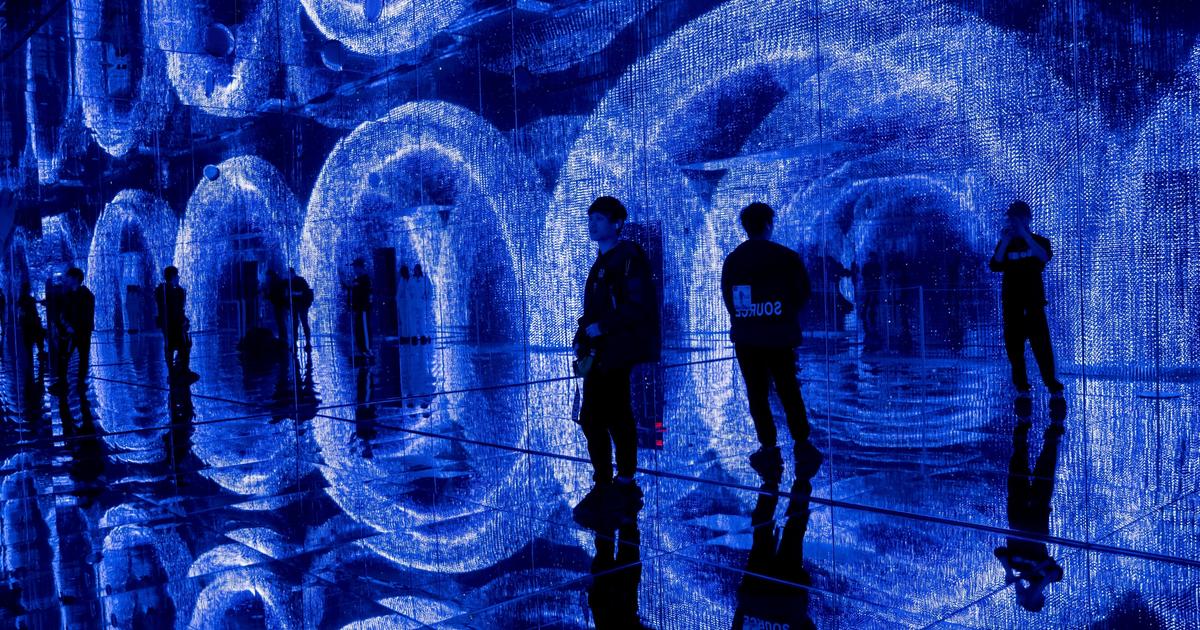Dear reader,
Instagram is a bit like sausage: what counts is the result.
Not how it is made.
But the Belgian artist Dries Depoorter shows how the Instagram sausage is made.
In his new project "The Follower", the 31-year-old from Ghent compares the recordings from publicly accessible surveillance cameras with Instagram photos, which in turn are provided with location data.
A two-minute video summarizes the best results of the experiment so far and explains in simplified form how Depoorter did it: First, he found three cameras on the Internet.
He recorded their live image for weeks.
Then he scoured Instagram with a script for photos whose GPS data (geotags) matched those of the surveillance cameras.
The collection technique is called scraping, and although Instagram prohibits its use in its terms of use, it is widespread.
Finally, the artist had software compare the photos with the video images.
"I tested various open source programs," he writes.
"I got most of the results with facial recognition software."
The result is a kind of making-of of the photos: In what banal, everyday hustle and bustle do normal Instagram users and also influencers with more than 100,000 followers pose, how are supposedly spontaneous scenes posed and how unglamorous does the environment look before the image processing results in colorful ones makes scenery?
In short: How artificial is the Instagram world?
Depoorter has been dealing with surveillance technology and social networks for years.
He became known, among other things, as the inventor of the chat app »Die With Me«.
It only works if the smartphones of the chat participants have less than five percent battery charge.
The last words (until the next socket) should be exchanged via his app.
The new project, he writes to me, aims to warn of the power of modern surveillance technology: »I did it alone, with limited access to cameras and data.
Imagine what the government can do!«
It's not overly original as an artistic statement.
Of course, security authorities can do more than one person when it comes to merging and analyzing data.
For example, the FBI identified one of the men who stormed the US Capitol on January 6, 2021 in a very similar way: Open-source facial recognition software, which searched video footage from the day, recognized him when it was compared with Instagram photos.
Nevertheless, Depoorter apparently hit a nerve.
In any case, on Monday his website collapsed under the onslaught of curious people, as he himself wrote on Twitter.
Depoorter announced that he would gradually publish more hits online.
It is probably not so much the political message that inspires so many people for the project, but rather the look behind the scenes of their photo shoots, which the Instagram influencers probably did not want.
To me, though, it's a vivid example of the power of open-source technology -- and as such, at least happier than comparable attempts after the storming of the Capitol.
Here you can find the project page of »The Follower« with all pictures and videos.
Our current Netzwelt reading tips for SPIEGEL.de
"TikTok's Bizarre Gift Shop" (9 minutes read)
TikTok sends live streamers into a fierce competition for the fans' attention - and for their money.
The system behind it is intentionally difficult to see through.
Markus Böhm and Matthias Kreienbrink dive »into a bizarre, hopelessly commercial world«.
»Why Apple is driving up the iPhone price« (3 minutes of reading)
In the USA, Apple sells the iPhone 14 from 799 dollars, in Germany at least 999 euros are due.
Jörg Breithut asked experts about the background.
"Apple's new gadgets can do that" (5 minutes of reading)
Apple again: Matthias Kremp was once again in Cupertino to get a first impression of the new hardware.
External links: Three tips from other media
»heise online« clones the voice of the podcast editor (podcasts, each around 3 minutes)
Exciting experiment by the colleagues: This week they publish a news podcast in the morning with the synthesized voice of their spokeswoman Isabel Grünewald, and in the afternoon there is an episode with her real green forest.
The difference is audible, but only in details.
Here the editor explains the project.
»I just spent a week with a robot cat and my life will never be the same« (English, 2 minutes of reading)
Chris Matyszczyk from »ZDNET« borrowed a robot cat.
Thanks to so-called artificial intelligence, the "MetaCat" should appear particularly lifelike.
Matyszczyk writes: »Every time she looked at me, it felt like I had insulted an authoritarian government.«
»A food delivery robot forces it's way across a police crime scene« (Video, English, 1:45 minutes)
Freely adapted from William Gibson: The future is already here, but it has yet to get through the police cordon.
I wish you a pleasant week.
Patrick Beuth









